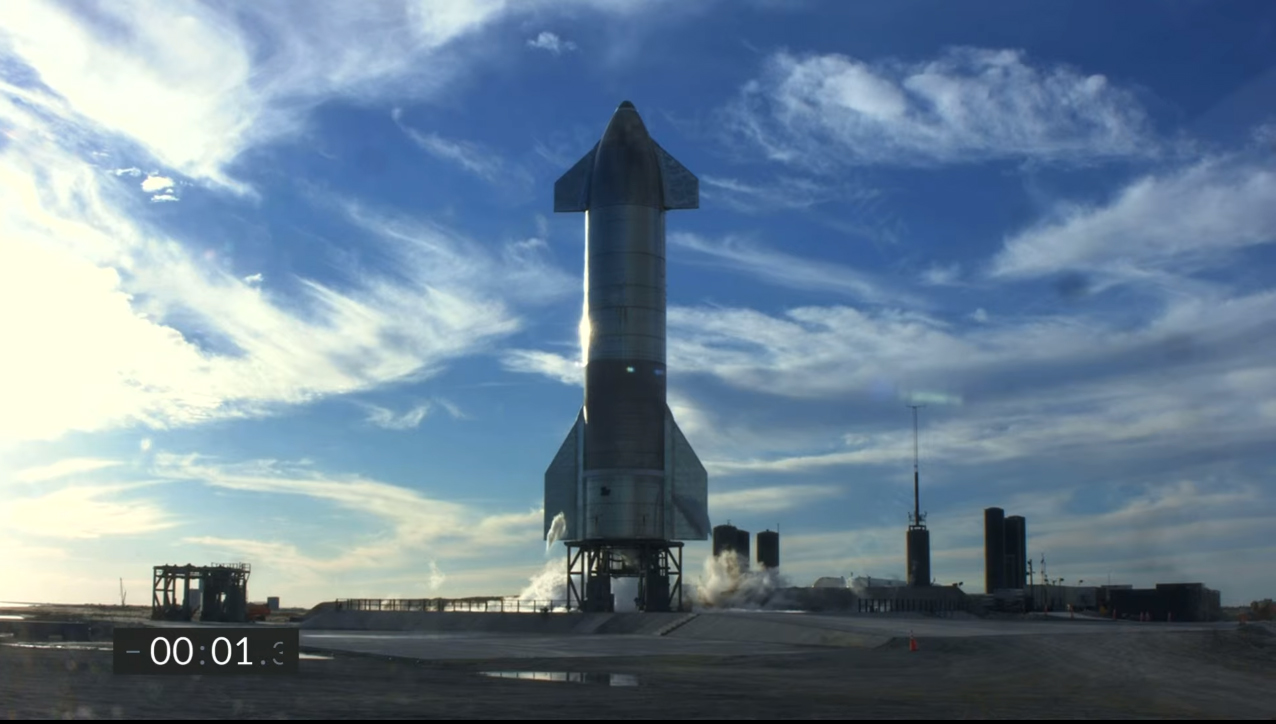SpaceX aborts Starship SN8 prototype test launch at last second
We'll have to wait a little longer to see SpaceX's latest Starship prototype make its highly anticipated big hop.
The vehicle, known as Starship SN8 ("Serial No. 8"), was scheduled to launch on an 8-mile-high (12.5 kilometers) test flight today (Dec. 8) from SpaceX's South Texas facility, near the Gulf Coast village of Boca Chica.
And it nearly happened. But less than 2 seconds before liftoff, just after 5:30 p.m. EDT (2230 GMT and 4:30 p.m. local Texas time), SN8 detected something abnormal with one or more of its three Raptor engines and automatically aborted the flight.
Related: Starship and Super Heavy: SpaceX's Mars-colonizing vehicles in images
It's unclear at the moment when SN8 will get its next chance to fly; that depends on what caused the abort and how difficult it will be to fix. But there are launch windows available on both Wednesday and Thursday (Dec. 9 and Dec. 10), SpaceX representatives said.
SpaceX is developing Starship to take people and cargo to the moon, Mars and other distant destinations. The transportation system consists of two elements, both of which are designed to be fully reusable: a 165-foot-tall (50 meters) stainless-steel spacecraft called Starship and a giant rocket called Super Heavy.
The final Starship will sport six Raptors and be powerful to launch itself off the moon and Mars. It will need Super Heavy, however, to escape Earth's much deeper gravity well. (Super Heavy, which will be powered by about 30 Raptors, will land back on Earth shortly after launching Starship to orbit.)
Breaking space news, the latest updates on rocket launches, skywatching events and more!
SpaceX is iterating toward the final Starship design via a series of prototypes, three of which have already taken to the sky. But all three of those vehicles — known as Starhopper, SN5 and SN6 — had just a single Raptor and reached a maximum altitude of about 500 feet (150 m) on their jaunts.
So space fans have been very much looking forward to SN8's big hop, which is much more demanding. And SN8 is far more complex than any of its predecessors; it has a nose cone and orientation-stabilizing flaps, for example, whereas Starhopper, SN5 and SN6 resembled flying silos.
It will be fun and dramatic to watch the big silver vehicle fly high — whenever that may be.
Mike Wall is the author of "Out There" (Grand Central Publishing, 2018; illustrated by Karl Tate), a book about the search for alien life. Follow him on Twitter @michaeldwall. Follow us on Twitter @Spacedotcom or Facebook.

Michael Wall is a Senior Space Writer with Space.com and joined the team in 2010. He primarily covers exoplanets, spaceflight and military space, but has been known to dabble in the space art beat. His book about the search for alien life, "Out There," was published on Nov. 13, 2018. Before becoming a science writer, Michael worked as a herpetologist and wildlife biologist. He has a Ph.D. in evolutionary biology from the University of Sydney, Australia, a bachelor's degree from the University of Arizona, and a graduate certificate in science writing from the University of California, Santa Cruz. To find out what his latest project is, you can follow Michael on Twitter.

